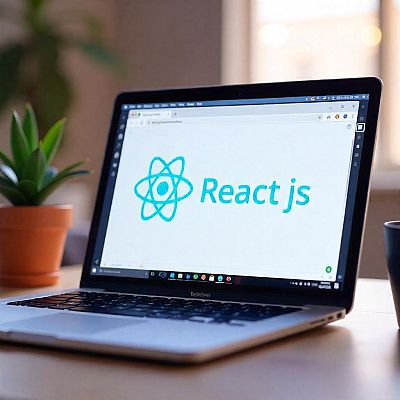React Uncovered: 25 Most Common Questions Answered (For Beginners to Pros)
Confused about React? This beginner-to-pro QA guide answers 25 frequently asked questions about React.js; what it is, how it works, and how to level up with it in 2025.

Quick Summary
React is everywhere: from social media platforms to sleek dashboards. If you're starting out or switching frameworks, you're probably asking questions like “What is JSX?” or “How does React differ from plain JavaScript?” This article breaks it all down in a clear Q&A format. Let’s demystify React together.
❓ 25 Frequently Asked Questions About React
1. What is React, and who created it?
React is a JavaScript library for building user interfaces, especially for single-page applications (SPAs). It was developed by Facebook (Meta) in 2013 and is maintained as an open-source project.
2. Is React a framework or a library?
React is a library, not a full-fledged framework like Angular. It focuses solely on the view layer, which makes it lightweight and flexible.
3. What is JSX?
JSX stands for JavaScript XML. It's a syntax extension that lets you write HTML-like code within your JavaScript.
const App = () => <h1>Hello, React!</h1>;
4. How is React different from vanilla JavaScript?
React uses a virtual DOM to handle updates efficiently, while vanilla JavaScript directly manipulates the DOM, which can be slower and more error-prone.
5. What is the Virtual DOM?
The Virtual DOM is a lightweight in-memory representation of the actual DOM. React compares it with the previous version and applies only the necessary updates to the real DOM.
6. What are React components?
Components are reusable UI blocks. They can be:
- Functional components (most common)
- Class components (older style)
7. What are props in React?
Props are short for "properties." They are read-only data passed from a parent to a child component.
8. What is state in React?
State is data maintained by a component. It can change over time and trigger re-renders.
const [count, setCount] = useState(0);
9. What’s the difference between props and state?
- Props: Read-only, passed down.
- State: Local, mutable within the component.
10. What are hooks in React?
Hooks are functions that let you use React features like state and lifecycle in functional components. Examples:
- useState
- useEffect
- useRef
11. What does useEffect do?
useEffect() lets you run side effects (e.g., fetching data, event listeners) after rendering.
useEffect(() => {
// Run side effect here
}, []);
12. What are controlled vs. uncontrolled components?
Controlled: React controls the form input using state.
Uncontrolled: DOM handles the input via `ref`.
13. What is lifting state up?
“Lifting state up” means moving shared state to the nearest common parent so multiple components can access it via props.
14. What is React Router?
React Router is a popular routing library that enables navigation between views/components in a React app.
Official docs: React router
15. How do you handle forms in React?
Use controlled components:
const [value, setValue] = useState("");
<input value={value} onChange={e => setValue(e.target.value)} />
16. What is a key in React?
Keys help React identify which items have changed. Use a unique and stable identifier.
items.map(item => <li key={item.id}>{item.name}</li>);
17. What is conditional rendering in React?
It’s rendering elements based on conditions.
{isLoggedIn ? <Dashboard /> : <Login />}
18. What is the context API?
The Context API allows you to pass data through the component tree without props. Great for theme, auth, or language.
19. What is Redux, and how does it relate to React?
Redux is a state management library often used with React to manage complex app-wide state.
> Alternative: React’s own `useContext` + `useReducer`
20. What is the difference between React and React Native?
- React: For web development.
- React Native: For building native mobile apps using React.
21. How does React optimize performance?
React improves performance via:
- Virtual DOM
- Reconciliation
- Code splitting
- Memoization (`React.memo`, `useMemo`, etc.)
22. What are fragments in React?
Fragments let you return multiple elements without adding extra DOM nodes.
<>
<p>First</p>
<p>Second</p>
</>
23. What are portals in React?
Portals allow rendering a component outside its parent DOM tree.
ReactDOM.createPortal(child, container)
24. How do I style React components?
Options include:
- CSS Modules
- Inline styles
- Styled-components or other CSS-in-JS libraries
- Tailwind CSS
25. How do I start learning React in 2025?
Start with:
- https://react.dev
- YouTube tutorials (e.g., Net Ninja, Traversy Media)
- Udemy courses like “React – The Complete Guide”
- Build real-world projects!
Conc
React is one of the most valuable tools in a developer's arsenal in 2025. Whether you're building a dashboard, blog, or mobile app, React offers speed, scalability, and developer delight.
Useful Resources
Related Posts
Comments (0)
Please login to join the discussion